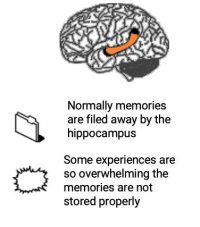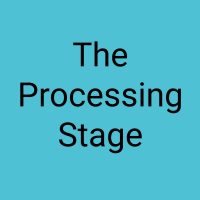What Is Eye Movement Desensitisation and Reprocessing (EMDR)?
Eye Movement Desensitisation and Reprocessing (EMDR) is a therapy approach developed for working with distressing or traumatic memories. The theory behind EMDR is that many psychological difficulties are the result of distressing life experiences which have not been stored in memory properly and are said to be unprocessed or blocked. These traumatic memories may need some help to become processed, and EMDR is one way to do this.
What is different about trauma memories to normal memories?
Normal memories are stored by a part of the brain called the hippocampus. You can think of the hippocampus as a sort of librarian which catalogues (processes) events and stores them in the right place. However, some traumatic events (such as accidents, abuse, disasters, or violence) are so overwhelming that the hippocampus doesn’t do its job properly.
When this happens, memories are stored in their raw, unprocessed form. These trauma memories are easily triggered, leading them to replay and cause distress over and again..

What will I be asked to do in an EMDR session? There are a number of steps to EMDR treatment, but 3 key stages are :

To prepare for
- Think of a troubling memory, then identify an image of the worst moment of that memory
- Identify a negative thought or belief about that worst moment (the therapist may ask “what is the worst thing that moment says about you?”)
- Identify emotions and bodily feelings linked to that moment
- Identify a new preferred thought or belief

The Processing Stage
- Think about the image & negative belief, whilst at the same time making back and forth eye movements (Bilateral Stimulation – BLS)
- Allow your mind to ‘go with’ whatever comes up and just notice what happens
- This process will be repeated until the memory causes less distress (this may happen in one session, or may take more than one session)

The Installation Stage
- Review and confirm the new preferred belief
- Think about the image and the preferred belief while at the same time making back and forth eye movements (BLS)
- This process will be repeated until the the new preferred belief feeling is strong and true. This may happen in one session, or may take more than one.
Why do I need to make eye movements? In EMDR you are asked to pay attention from one side to another while thinking about your memory. One way to pay attention from left to right is to follow the therapist’s finger as they move them from side-to-side in your line of vision. Alternatively you may be asked to pay attention to sounds , tapping sensations or follow the movement on an electronic light bar. This side-to-side motion is called bilateral stimulation (BLS). It has been found to enhance memory processing.

What happens after an EMDR session? Before your sessions ends your therapist will ensure that you are calm and relaxed. Over the days that follow, you may notice new insights, thoughts and memories. You will also be asked to practice relaxation and self-soothing techniques that you learnt with your therapist.
How many EMDR sessions will I need? The number of sessions needed will depend on the type and severity of trauma which you experienced. As a rough guideline 8-12 sessions may be sufficient to treat simpler traumas, with more sessions necessary for multiple traumas.
Additional Resources
